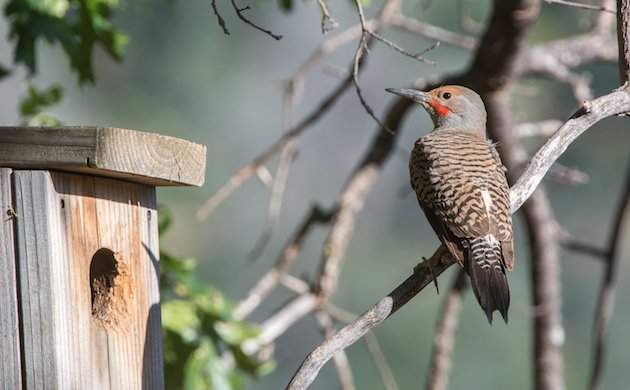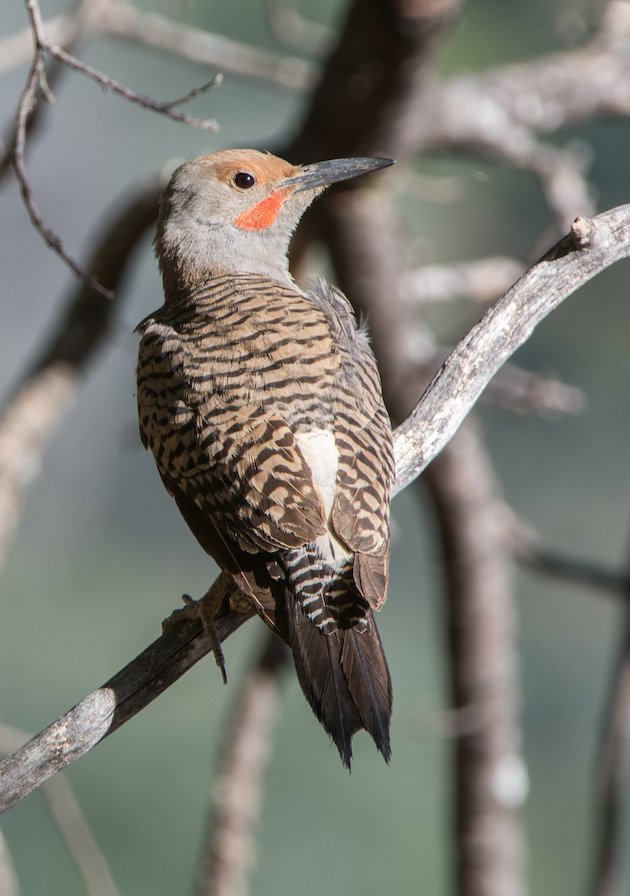
My nestling Red-shafted Northern Flickers (Colaptes auratus) are around two weeks old now and the adults are still entering the nestbox to feed them. According to Birds of North America Online:
“Nestlings huddle at the bottom of the nest until about 11 days old, then for about 1 week they array themselves around the circumference at the bottom of the cavity with their chins and throats pressed against the wall; at 17–18 days they are strong enough and claws sharp enough to cling to cavity walls. At approximately 16 days, tips of bills can be seen at the nest hole, and heads at 21 days.”
I saw no tips of bills at the nestbox entrance but this is what the nestlings looked like in the box.

The female and male were both feeding the young birds, then sometimes eating the nestling’s excrement and sometimes carrying out the fecal sacs.
This is a photo of the proud father perched on a branch just outside the nestbox.

And a video I shot of both the adults coming in to feed the youngsters followed by a short clip of the nestlings in the box. I hope you like it!
httpv://youtu.be/elTPoQxhklg













Great photos and video! I really enjoyed seeing both parents caring for their babies. And those babies really look ready to see the world beyond that box! I now have a female at our suet feeder, and I wonder if I should set up a nestbox.
Hi Wendy. I’m thinking that those babies will start leaving the nest this weekend. I hope to get some photos and/or video of that behavior. I posted a Flicker nestbox plan in my first post of this series and there are several nestbox plans on my website here. As I mentioned in the post, I waited three years for a pair of Flickers to use the box but it was worth the wait! By the way, in all these years, I have never seen a Northern Flicker at my suet feeder! Maybe this pair will bring their young to my feeder 😉